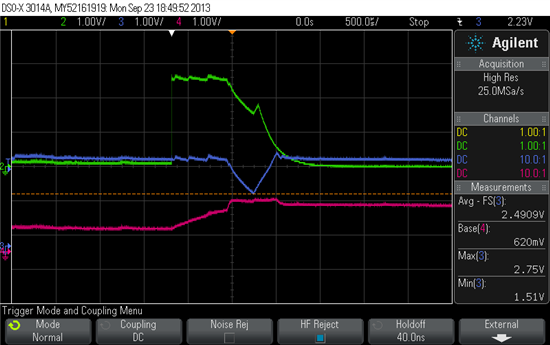Hello,
I seem to have a unique problem with the TPS61260 part. My application requires running off a CR2032 primary coin cell (3V). I have a TP63030 buck-boost down regulating the battery voltage to supply 2.4V to the board and the TPS61260 feeding off the 2.4V line to boost up to 2.8V to supply a NAND chip only when needed.
My problem is that on some boards, every minute or so when the NAND is enabled (the EN pin to the TPS61260 is taken from GND to HIGH) the output voltage starts ramping up and gets stuck at 1.5V, and quickly falls back down to 0. At this point, the 2.4V line has also dipped significantly (by 1V) causing the entire CPU to reset. I feel like it is drawing an excessive amount of current at startup that is causing the 2.4V line to droop.
I would like to get some of your suggestions on why this might be happening only on some enables and not all. I have sufficient capacitance on the 2.4V line (90uF +) and a 10uF cap right at the input of the TPS61260 as recommended in the datasheet.
Thanks,
Shriram


